3.0A, 150Khz, Step-Down Switching RegulatorFEATURES3.3V, 5.0V, 12V, 15V, and Adjustable Output VersionsAdjustable Version Output Voltage Range, 1.23 to 37V +/- 4%. Maximum Over Line and Load ConditionsGuaranteed 3.0A Output CurrentWide Input Voltage RangeRequires Only 4 External Components150Khz Fixed Frequency Internal OscillatorTTL Shutdown Capability, Low Power Standby Mode High EfficiencyUses Readily Available Standard InductorsThermal Shutdown and Current Limit ProtectionMoisture Sensitivity Level(MSL) Equals1ApplicationsSimple High-Efficiency Step-Down(Buck) RegulatorEfficient Pre-Regulator for Linear RegulatorsOn-Card Switching RegulatorsPositive to Negative Converter(Buck-Boost)Negative Step-Up ConvertersPower Supply for Battery ChargersDESCRIPTIONORDERING INFORMATION The LM2596 series of regulators are monolithic integrated circuits ideally suited for easy and convenient design of a step-down switching regualtor(buck converter). All circuits of this series are capable of driving a 3.0A load with excellent line and load regulation. These devices are available in fixed output voltages of 3.3V, 5.0V,12V, 15V, and an adjustable output version. These regulatiors were designed to minimize the number of externalcomponents to simplify the power supply design. Standard series of inductors optimized for use with the LM2576 are offered by several different inductor manufacturers. Since the LM2596 converter is a switch-mode power supply, its efficiency is significantly higher in comparison with popular three-terminal limear reguators, especially with higher input voltages. available from several different manufacturers. This feature greatly simplifies the design of switch-mode power supplies. The LM2596 features include a guaranteed +/- 4% tolerance on output voltage within specified input voltages and output load conditions, and +/-15% on the oscillator frequency (+/- 2% over 0oC to 125 oC). External shutdown is included, featuring 80 uA(typical) standby current. The output switch includes cycle-bycycle current limiting, as well as thermal shutdown for full protection under fault conditions. TO-220VHTC1LM2596 In many cases, the power dissipated is so low that no heatsink is required or its size couldbe reduced dramatically. A standard series of inductors optimized for use with the LM2596 are LM2596TV-X.XLM2596T-X.XDeviceMarkingPackageLM2596T-X.XLM2596T-X.XTO-220LM2596RLM2596R-X.XTO-263TO-220VTO-2201. Vin2. Output3. Ground4. Feedback5. On/OffTO-263(D2)Oct 2004 - Rev 0�
3.0A, 15V, Step-Down Switching RegulatorHTC2LM2596Figure 1. Block Diagram and Typical ApplicationABSOLUTE MAXIMUM RATINGS(Absolute Maximum Ratings indicate limits beyond which damage to the device may occur.)TO-220, 5-LeadTO-263Thermal Resistance, Junction-to-AmbientThermal Resistance, Junction-to-caseThermal Resistance, Junction-to-AmbientThermal Resistance, Junction-to-casePowerDissipationTypical Application (Fixed Output Voltage Versions)680 uF220 uF1N582433 uHLM2596-5.0 Oct 2004 - Rev 0�
3.0A, 15V, Step-Down Switching RegulatorHTC3LM2596OPERATING RATINGS (Operating Ratings indicate conditions for which the device is intended to befunctional, but do not guarantee specific performance limits. For guaranteed specifications and testconditions, see the Electrical Characteristics.)ELECTRICAL CHARACTERISTICS / SYSTEM PARAMETERS ([Note 1] Test Circuit Figure 2)(Unless otherwise specified, Vin = 12 V for the 3.3 V, 5.0 V, and Adjustable version, Vin = 25 V forthe 12 V version, and Vin = 30 V for the 15 V version. ILoad = 500 mA. For typical values TJ = 25°C,for min/max values TJ is the operating junction temperature range that applies [Note 2], unlessotherwise noted.)73809098LM2596-3.3 ([ Note 1]. Test Circuit Figure 2 )73LM2596-5.0 ([ Note 1]. Test Circuit Figure 1 )LM2596-ADJ ([ Note 1]. Test Circuit Figure 2 )LM2596-15 ([ Note 1]. Test Circuit Figure 2 )LM2596-12 ([ Note 1]. Test Circuit Figure 2 )LM2596-5.0 ([ Note 1]. Test Circuit Figure 2 )Oct 2004 - Rev 0�
3.0A, 15V, Step-Down Switching RegulatorLM2596HTC4ELECTRICAL CHARACTERISTICS / Device Parameters(Unless otherwise specified, Vin = 12 V for the 3.3 V, 5.0 V, and Adjustable version, Vin = 25 V for the 12V version, and Vin = 30 V for the 15 V version. ILoad = 500 mA. For typical values Tj = 25°C, for min/maxvalues Tj is the operating junction temperature range that applies [Note 2], unless otherwise noted.)1. External components such as the catch diode, inductor, input and output capacitors can affect switching regulator system performance. When the LM2596 is used as shown in the Figure 1 test circuit, system performance will be as shown in system parameters section .2. Tested junction temperature range for the LM2596 : TLOW = –0°C THIGH = +125°C3. The oscillator frequency reduces to approximately 18 kHz in the event of an output short or an overload which causes the regulated output voltage to drop approximately 40% from the nominal output voltage. This self protection feature lowers the average dissipation of the IC by lowering the minimum duty cycle from 5% down to approximately 2%.4. Output (Pin 2) sourcing current. No diode, inductor or capacitor connected to output pin.5. Feedback (Pin 4) removed from output and connected to 0 V.6. Feedback (Pin 4) removed from output and connected to +12 V for the Adjustable, 3.3 V, and 5.0V ersions, and +25 V for the 12 V and15 V versions, to force the output transistor “off”.7. Vin = 40 V.22105001501731001271101.161.54.53.6100173-1.40000003.46.97.5-50230-1052500.6-2.0-1.30.61.3-5152.00.025.0V LOGIC = 2.5V (Regulator OFF)V LOGIC = 0.5V (Regulator ON)Oct 2004 - Rev 0�
3.0A, 15V, Step-Down Switching RegulatorLM2596HTC5TYPICAL PERFORMANCE CHARACTERISTICS (Circuit of Figure 2)Oct 2004 - Rev 0�
3.0A, 15V, Step-Down Switching Regulator6LM2596HTCTYPICAL PERFORMANCE CHARACTERISTICS (Circuit of Figure 2)Feedback Pin Bias CurrentOct 2004 - Rev 0�
3.0A, 15V, Step-Down Switching Regulator7LM2596HTCTest Circuit and Layout GuidelinesAs in any switching regulator, layout is very important. Rapidly switching currents associated with wiring inductance cangenerate voltage transients which can cause problems. For minimal inductance and ground loops, the wires indicated byheavy lines should be wide printed circuit traces and should be kept as short as possible. For best results, externalcomponents should be located as close to the switcher lC as possible using ground plane construction or single pointgrounding.If open core inductors are used, special care must be taken as to the location and positioning of this type of inductor. Allowingthe inductor flux to intersect sensitive feedback, lC groundpath and COUT wiring can cause problems.When using the adjustable version, special care must be taken as to the location of the feedback resistors and theassociated wiring. Physically locate both resistors near the IC, and route the wiring away from the inductor, especially an opencore type of inductor.Figure 2. Typical Test Circuits and Layout GuideOct 2004 - Rev 0�
3.0A, 15V, Step-Down Switching Regulator This pin is the positive input supply for the LM2596 step–down switching regulator.In order to minimize voltage transients and to supply the switching currents needed by the regulator, a suitable input bypass capacitor must be present .(Cin in Figure 1).This is the emitter of the internal switch. The saturation voltage Vsat of this output switch is typically 1.5 V. It should be kept in mind that the PCB area connected to this pin should be kept to a minimum in order to minimize coupling to sensitive circuitry.Circuit ground pin. See the information about the printed circuit board layout.This pin senses regulated output voltage to complete the feedback loop. The signal is divided by the internal resistor divider network R2, R1 and applied to the non–inverting input of the internal error amplifier. In the Adjustable version of the LM2596 switching regulator this pin is the direct input of the error amplifier and the resistor network R2, R1 is connected externally to allow programming of the output voltage.It allows the switching regulator circuit to be shut down using logic level signals, thus dropping the total input supply current to approximately 80 mA.The threshold voltage is typically 1.4 V. Applying a voltage above this value(up to +Vin) shuts the regulator off. If the voltage applied to this pin is lowerthan 1.4V or if this pin is left open, the regulator will be in the "on" condition45ON/OFF3DescriptionFeedbackLM2596HTC8Symbol1VinOutput2GndPIN FUNCTION DESCRIPTIONOct 2004 - Rev 0�
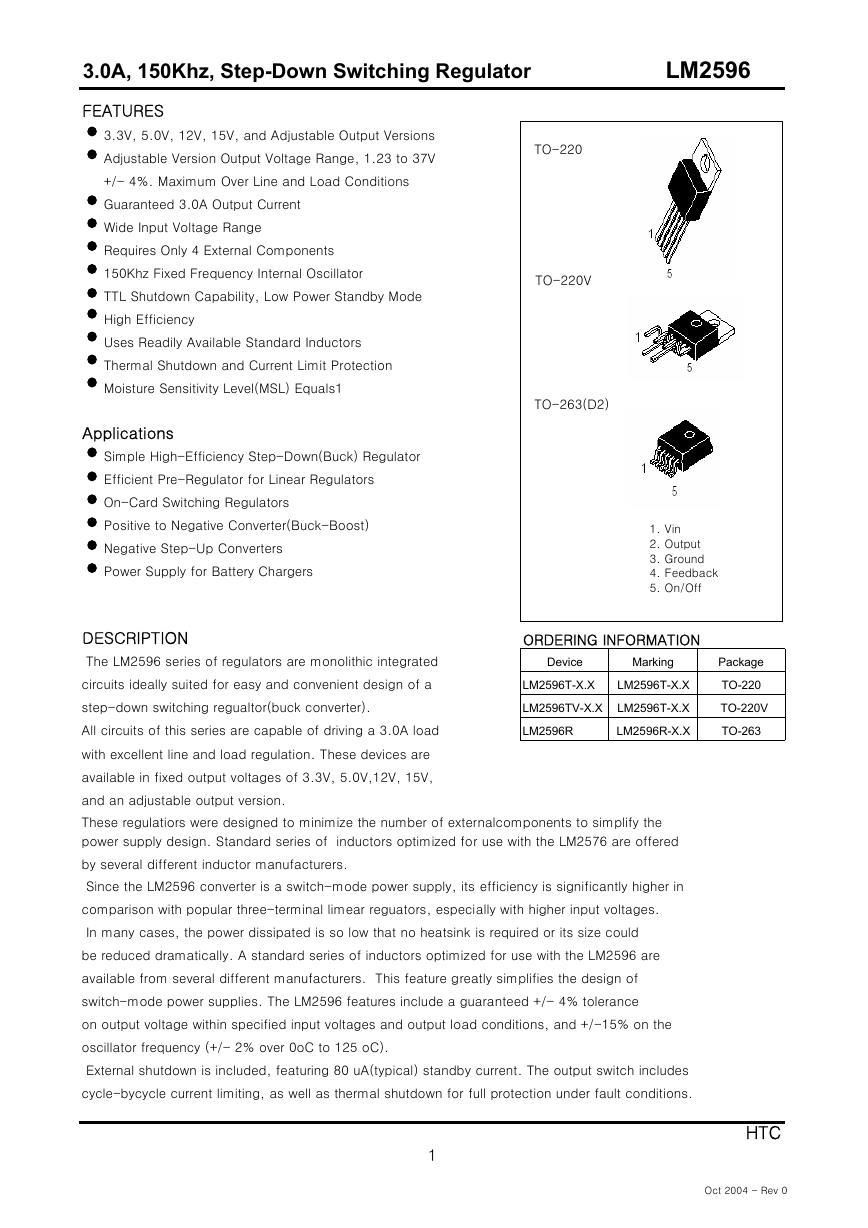
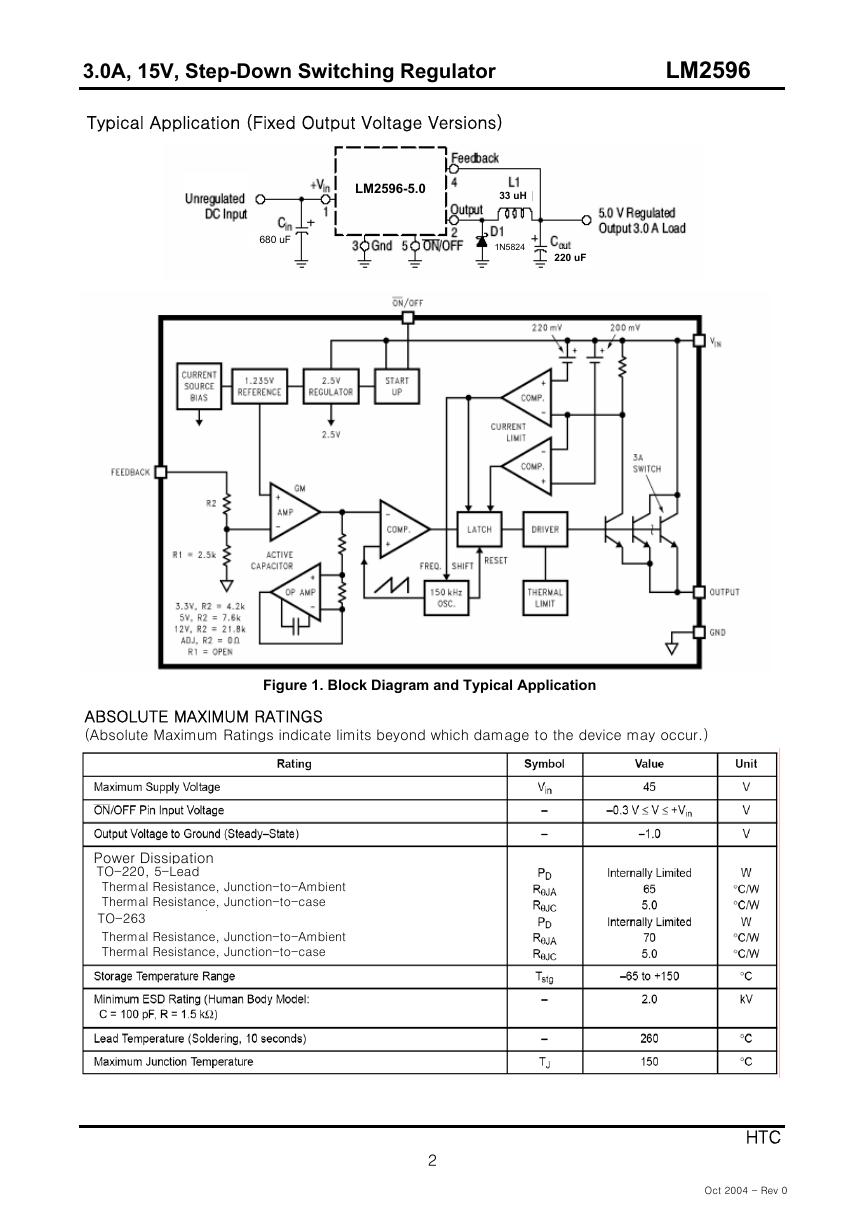

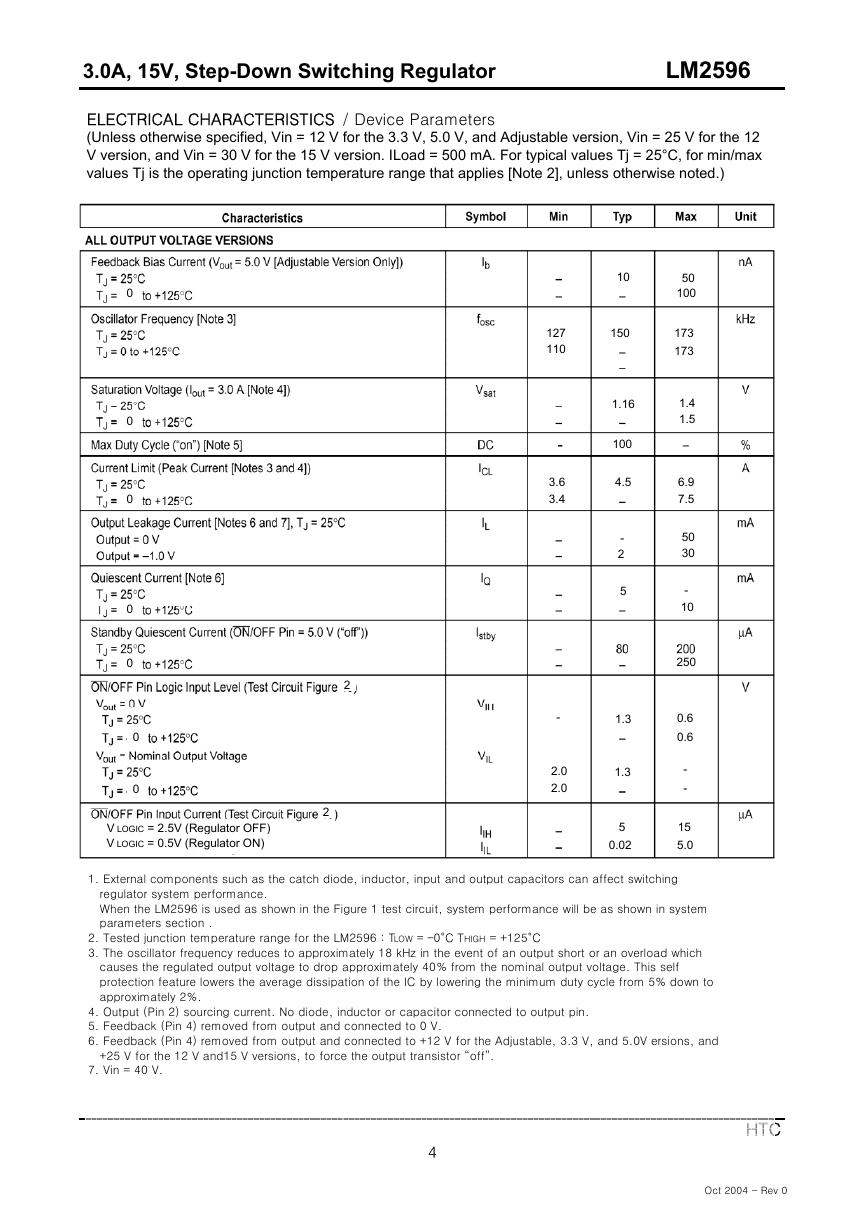
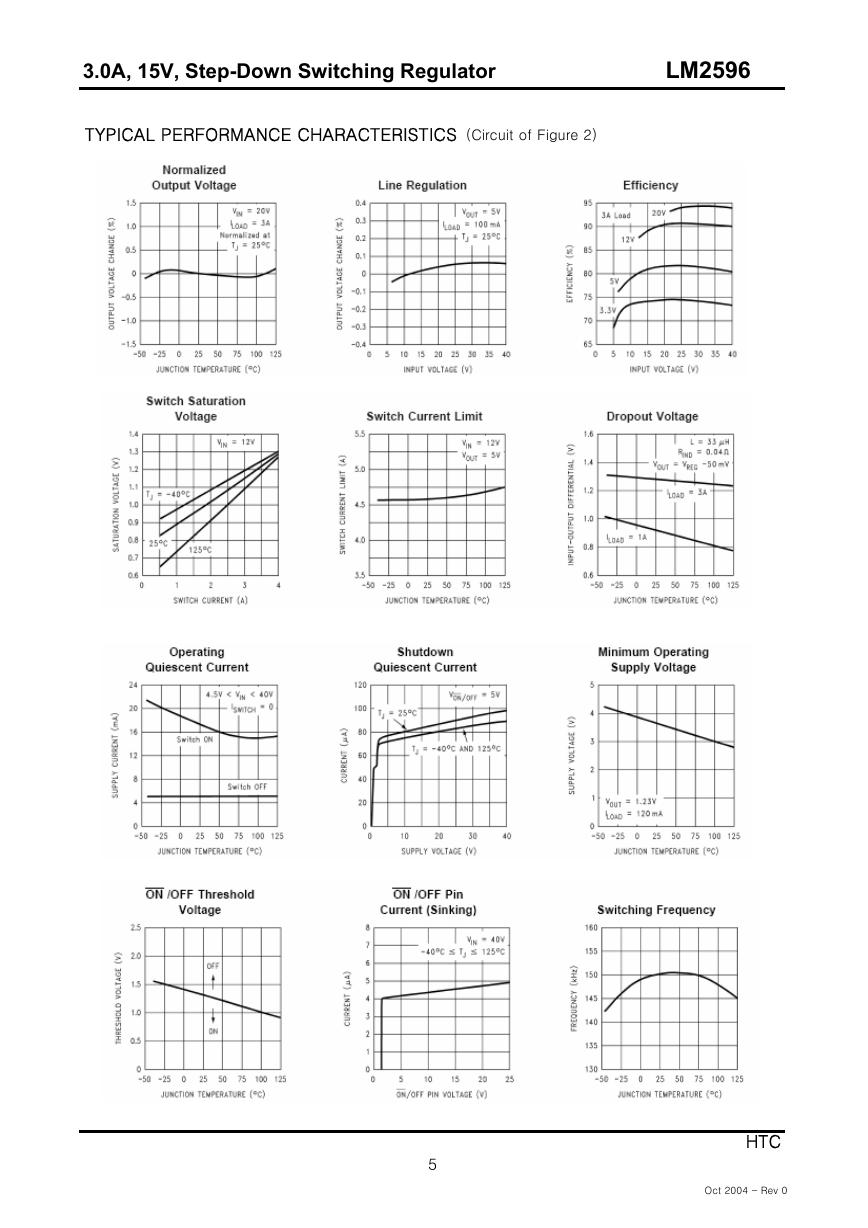
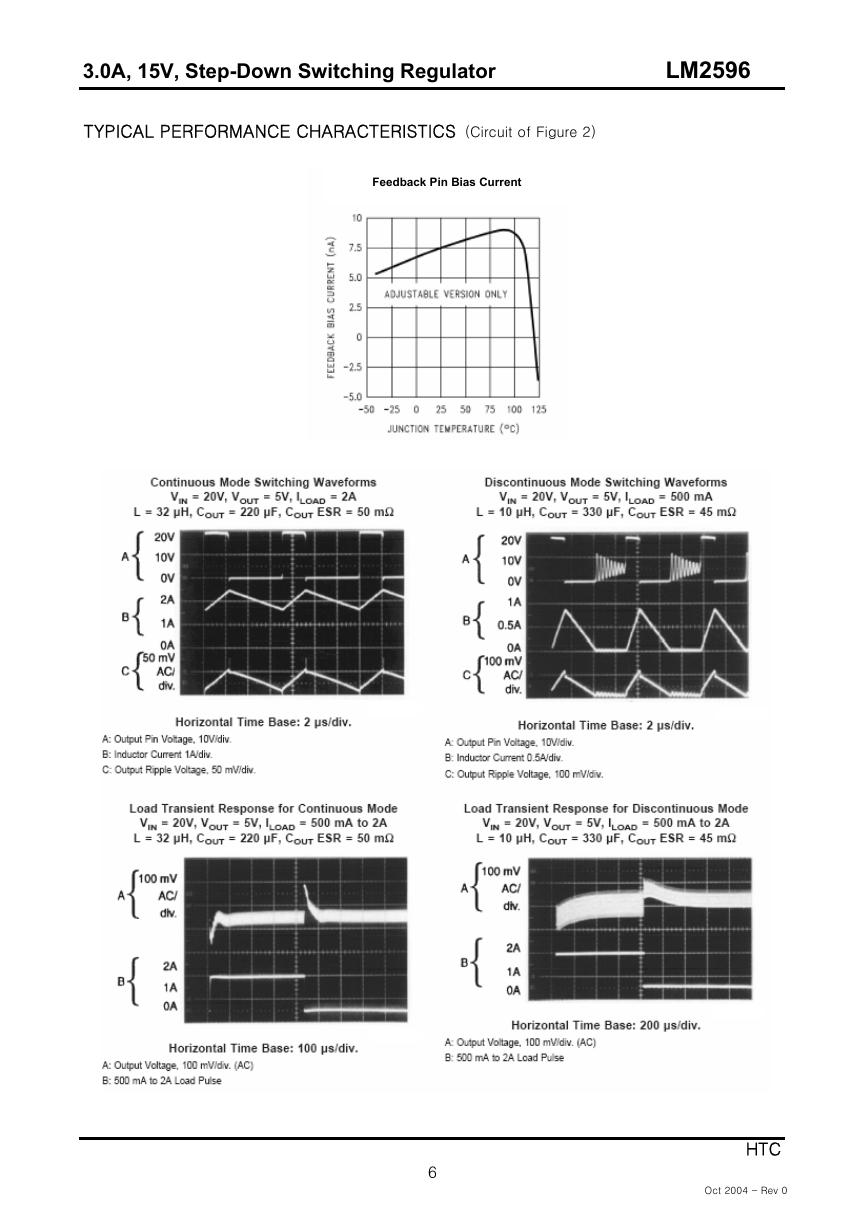
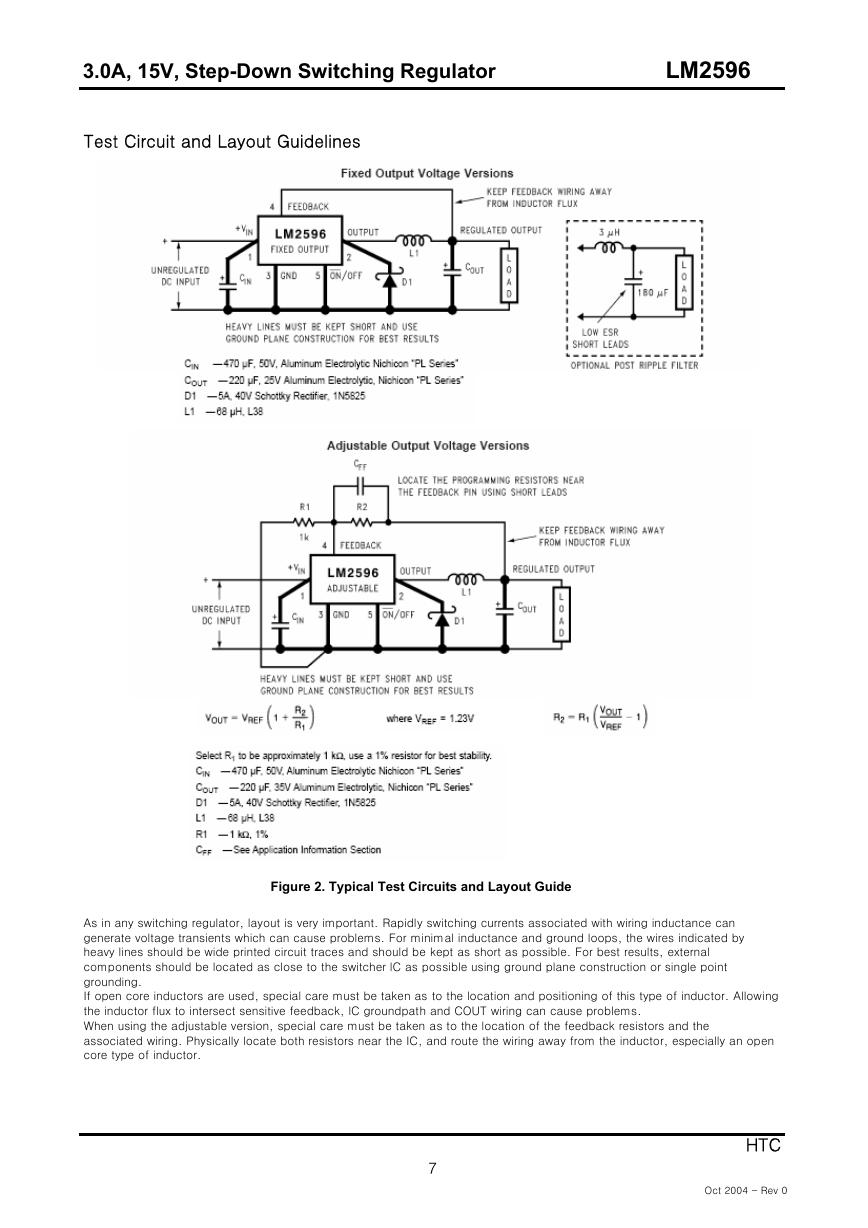
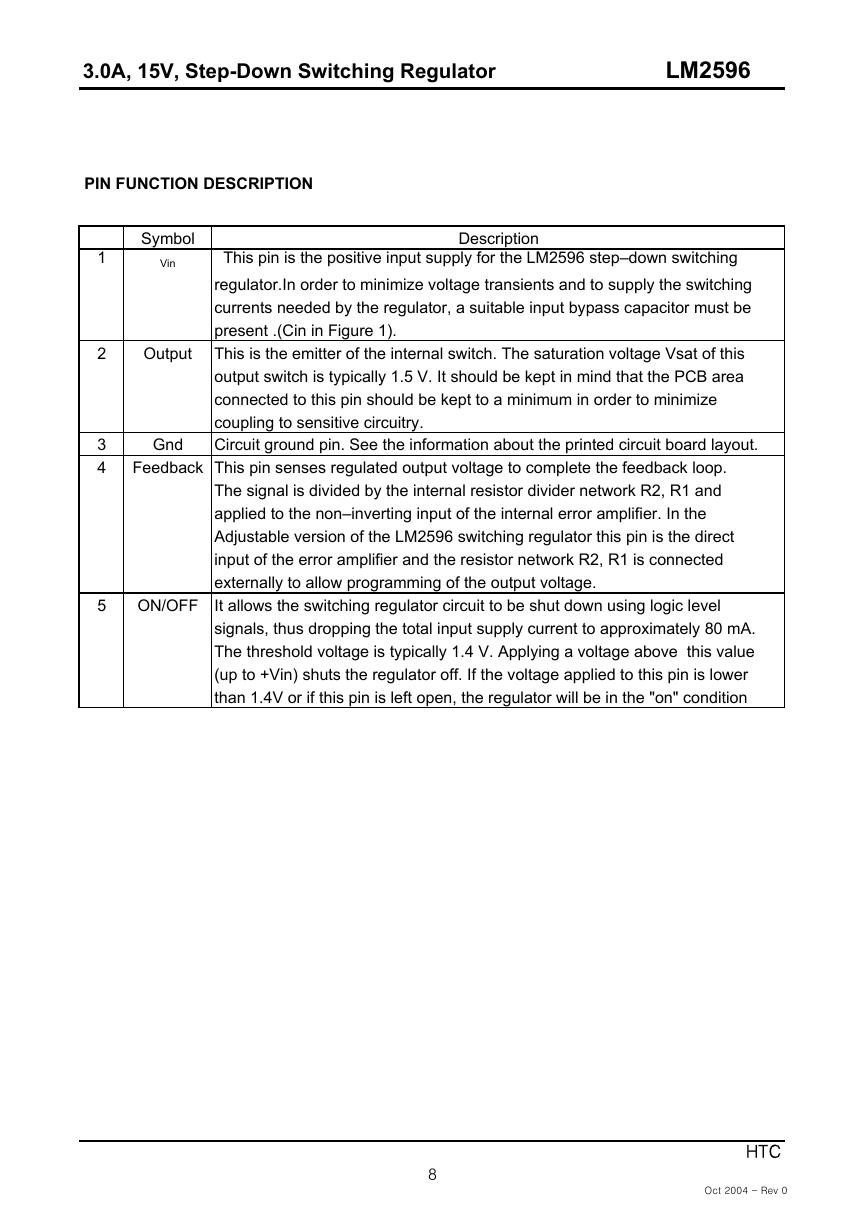








 V2版本原理图(Capacitive-Fingerprint-Reader-Schematic_V2).pdf
V2版本原理图(Capacitive-Fingerprint-Reader-Schematic_V2).pdf 摄像头工作原理.doc
摄像头工作原理.doc VL53L0X简要说明(En.FLVL53L00216).pdf
VL53L0X简要说明(En.FLVL53L00216).pdf 原理图(DVK720-Schematic).pdf
原理图(DVK720-Schematic).pdf 原理图(Pico-Clock-Green-Schdoc).pdf
原理图(Pico-Clock-Green-Schdoc).pdf 原理图(RS485-CAN-HAT-B-schematic).pdf
原理图(RS485-CAN-HAT-B-schematic).pdf File:SIM7500_SIM7600_SIM7800 Series_SSL_Application Note_V2.00.pdf
File:SIM7500_SIM7600_SIM7800 Series_SSL_Application Note_V2.00.pdf ADS1263(Ads1262).pdf
ADS1263(Ads1262).pdf 原理图(Open429Z-D-Schematic).pdf
原理图(Open429Z-D-Schematic).pdf 用户手册(Capacitive_Fingerprint_Reader_User_Manual_CN).pdf
用户手册(Capacitive_Fingerprint_Reader_User_Manual_CN).pdf CY7C68013A(英文版)(CY7C68013A).pdf
CY7C68013A(英文版)(CY7C68013A).pdf TechnicalReference_Dem.pdf
TechnicalReference_Dem.pdf